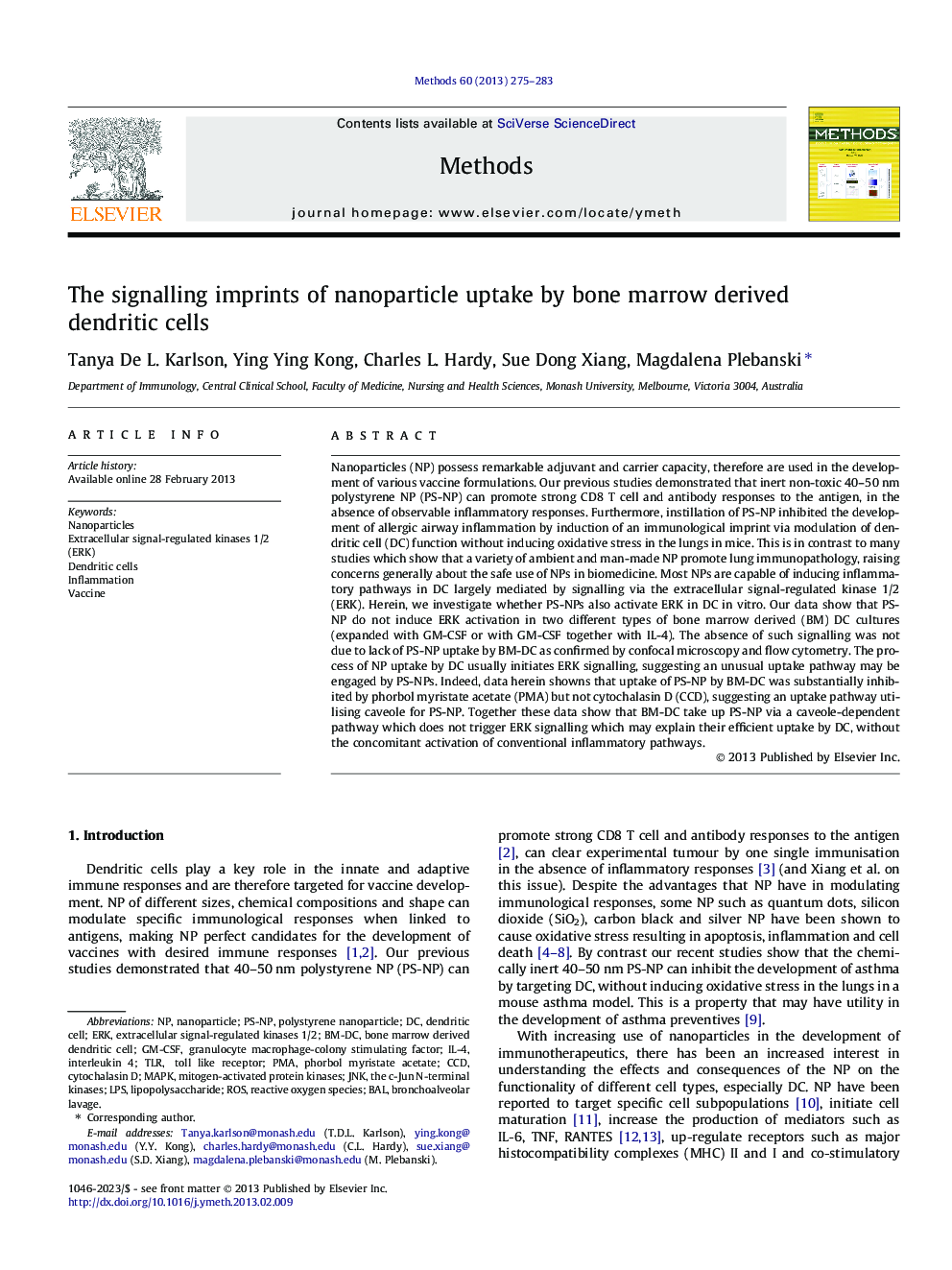| کد مقاله | کد نشریه | سال انتشار | مقاله انگلیسی | نسخه تمام متن |
|---|---|---|---|---|
| 1993609 | 1541255 | 2013 | 9 صفحه PDF | دانلود رایگان |

Nanoparticles (NP) possess remarkable adjuvant and carrier capacity, therefore are used in the development of various vaccine formulations. Our previous studies demonstrated that inert non-toxic 40–50 nm polystyrene NP (PS-NP) can promote strong CD8 T cell and antibody responses to the antigen, in the absence of observable inflammatory responses. Furthermore, instillation of PS-NP inhibited the development of allergic airway inflammation by induction of an immunological imprint via modulation of dendritic cell (DC) function without inducing oxidative stress in the lungs in mice. This is in contrast to many studies which show that a variety of ambient and man-made NP promote lung immunopathology, raising concerns generally about the safe use of NPs in biomedicine. Most NPs are capable of inducing inflammatory pathways in DC largely mediated by signalling via the extracellular signal-regulated kinase 1/2 (ERK). Herein, we investigate whether PS-NPs also activate ERK in DC in vitro. Our data show that PS-NP do not induce ERK activation in two different types of bone marrow derived (BM) DC cultures (expanded with GM-CSF or with GM-CSF together with IL-4). The absence of such signalling was not due to lack of PS-NP uptake by BM-DC as confirmed by confocal microscopy and flow cytometry. The process of NP uptake by DC usually initiates ERK signalling, suggesting an unusual uptake pathway may be engaged by PS-NPs. Indeed, data herein showns that uptake of PS-NP by BM-DC was substantially inhibited by phorbol myristate acetate (PMA) but not cytochalasin D (CCD), suggesting an uptake pathway utilising caveole for PS-NP. Together these data show that BM-DC take up PS-NP via a caveole-dependent pathway which does not trigger ERK signalling which may explain their efficient uptake by DC, without the concomitant activation of conventional inflammatory pathways.
► Inert non-toxic polystyrene inhibits development of allergic airway inflammation.
► Polystyrene particles do not activate of extracellular signal-regulated kinases 1/2.
► Polystyrene particles do not activate pro-inflammatory cytokine TNFα.
► BM-DC uptake of 40 nm nanoparticle via a caveolae-dependent pathway does not trigger ERK signalling.
► NP offer novel vaccine and immuno-modulator components with limited inflammation induction capacity.
Journal: Methods - Volume 60, Issue 3, 1 May 2013, Pages 275–283